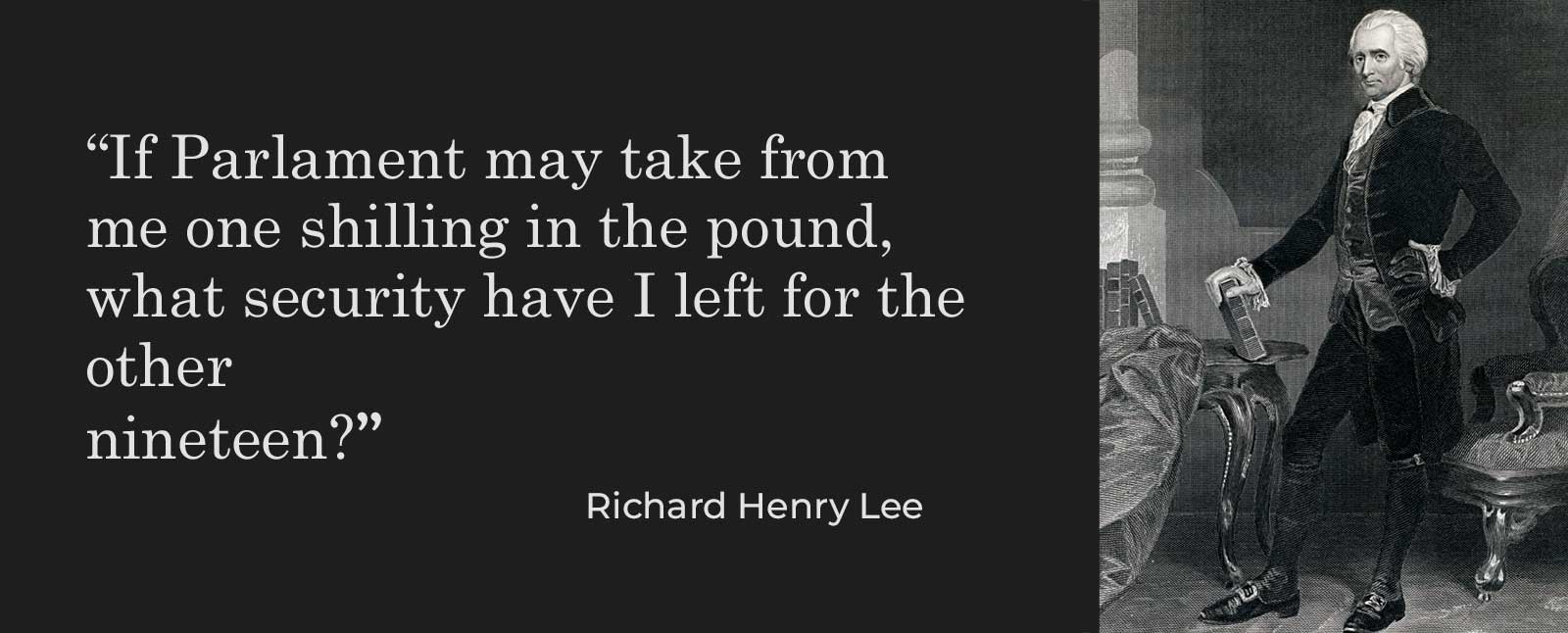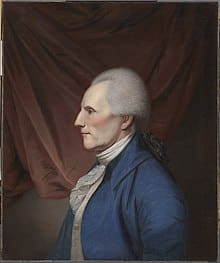The Path to American Independence

In June 7, 1776, Richard Henry Lee of Virginia delivered to the Continental Congress a resolution, known as the Lee Resolution, declaring the colonies of British America to be free and independent states. It reads as follows:
Resolved, That these United Colonies are, and of right ought to be, free and independent States, that they are absolved of all allegiance to the British Crown, and that all political connection between them and the State of Great Britain is, and ought to be, totally dissolved. That it is expedient forthwith to take the most effectual measures for forming foreign Alliances. That a plan of confederation be prepared and transmitted to the respective Colonies for their consideration and approbation.

Much of this language will be reproduced, almost exactly, in the Declaration of Independence. The Lee Resolution’s call for independence is not without precedent, and neither is its expressed concern that the colonies agree to a political confederation for mutual defense and peaceful commerce. These ideas did not circulate among colonists in the early years of New-World settlement, but developed over time as events pushed them in that direction. So we should consider how this happened. The path leading to American independence, we may argue, began in 1761.
The British fought a years-long war with the French and the American theater of that war is usually called the French and Indian War. The British government was in need of revenues to pay for the war and sought to gain some of it from the American colonies. But Americans were not interested in paying taxes for the king’s war and so hid wealth, engaged widely in smuggling, and generally did whatever they could to avoid the hated taxes. In response, the British government imposed writs of assistance which conferred upon British agents in the colonies the authority to enter any house, shop, warehouse, or ship, without a warrant, and search for and seize anything upon which relevant taxes had not been paid. As one would expect, British agents armed with a government monopoly on theft took full advantage.
James Otis, Jr. was an admired young lawyer who served for a time as the advocate general for the British admiralty court in Massachusetts. When he was called upon to defend the writs of assistance from challenges by merchants in Boston, Otis resigned his office as advocate general and instead represented the Bostonians seeking to overturn the legality of the writs. In February of 1761, Otis appeared before the Massachusetts Superior Court to argue against the writs of assistance. He repeatedly asserted that “Taxation without Representation is tyranny,” and while Americans adopted this phrase as a patriotic motto, they likewise hated taxation with representation. The idea was that by controlling representatives, people can control the appetite of government for ever higher revenues. Otis spoke for five hours making the case against the writs from legal, moral, and political perspectives seeking to make this point:
One of the most essential branches of English liberty is the freedom of one’s house. A man’s house is his castle; and whilst he is quiet, he is as well guarded as a prince in his castle. This writ, if it should be declared legal, would totally annihilate this privilege. Custom-house officers may enter our houses when they please; we are commanded to permit entry. Their menial servants may enter, may break locks, bars, and everything in their way; and whether they break through malice or revenge, no man, no court can inquire. Bare suspicion without oath is sufficient.
As expected, the court ruled against Otis and upheld the legality of the writs of assistance. John Adams was in the courtroom as Otis spoke, and took notes on what he said. Later, when recalling what everyone agreed was brilliant argument and oratory, Adams said that though he lost before the court, James Otis had lit the fire of independence in the American colonies. (We should remember that Otis’ sister, Mercy Otis Warren, is regarded as the “Muse of the Revolution.” She was a playwright and a poet who wrote a history of the Revolution under the pen name “a Columbian Patriot,” that was so highly regarded by Thomas Jefferson that as president, he gave a copy of Warren’s book to each member of his cabinet.) James Otis died from a lightening strike at the age of 58 while chatting with friends outside the home of a neighbor.
Americans understood that Otis’ loss before the Massachusetts Superior Court was a declaration from the British crown that it intended to use the colonists as feudal land tenants, and to extract revenues from them accordingly. Even a casual reading of the Declaration of Independence shows that this is exactly what happened. Most of the Declaration is a rehearsal of the many abuses visited upon the American colonists by the British crown, which Jefferson introduces writing: “But when a long Train of Abuses and Usurpations, pursuing invariably the same Object, evinces a Design to reduce them under absolute Despotism, it is their Right, it is their Duty, to throw off such Government, and to provide new Guards for their future security.” This conviction grew steadily in the wake of one British insult upon another, but this development was pushed in the direction of independence by the fact that the settlers from Britain arrived in a land where there was no king, no legal system, and no living political and cultural tradition, and so the settlers were compelled to develop their own institutions, and these of necessity would be institutions of self-government.
We see this American tradition of political liberty growing from the Mayflower Compact in 1620 to the Virginia Declaration of Rights in 1776. The Puritans who sailed in 1620 were headed for Jamestown in Virginia but were blown off course and landed at Massachusetts Bay. Before setting about to prepare a place to live, the settlers entered into a compact of government writing in part: “Having undertaken for the Glory of God, and Advancement of the Christian Faith, and the Honor of our King and Country, a Voyage to plant the first Colony in the northern Parts of Virginia; Do by these Presents, solemnly and mutually, in the Presence of God and one another, covenant and combine ourselves together into a civil Body Politick, for our better Ordering and Preservation, and Furtherance of the Ends aforesaid:…” Importantly, the Compact identifies as the purpose of the new Body Politick the establishment of “just and equal laws” for the “general Good.” The Massachusetts settlers were not in England, and in this new place, there were no cultural and political supports for the social hierarchy they had left behind, and while it was in them by tradition, their circumstances required a governing order suited to the new challenges they faced.
Nineteen years later, in 1639, the Fundamental Orders of Connecticut extended the basic political order emerging from the Mayflower Compact. In that document, the American settlers declare their governing order to be a “public state or commonwealth.” This is thought to be a significant development from the Mayflower Compact which held the order among the settlers to be a “covenant.” Extending from a covenant to a public state or commonwealth was an important development in the direction of an established political tradition that is truly American. The Fundamental Orders include two important features not found in the Compact of 1620: “to maintain the peace,” and “to insure domestic Tranquility,” and securing these goods is thought to be a proper function of government. Here analysts find recognition of the important distinction between social power and political power which will be crucial to disputes later between Americans who wanted a strong centralized, national government, and those who wanted a decentralized political order that respects the rights of communities to live as they see fit. This is a central theme running through American political thought, that is, the observation that it is the nature of political power to expand at the expense of social power, which is liberty, and this is why people must be vigilant to keep government bound by the restraints of a constitution.
The people of Massachusetts updated their covenant in 1641 in the Massachusetts Body of Liberties.[i] An important theoretical development in this document is its assertion of the “freedoms,” or “liberties, immunities and privileges” that are due to every man. While this sounds like an assertion of individual rights of the sort we will encounter later, it isn’t. In fact, in these early American political documents, we do not find the idea of the equality of persons, and certainly not equality as the interchangeability of persons as it is now asserted. We also do not find the idea of individual rights, but rather the rights identified are “due to every man in his place and proportion.” In other words, while we do see in the Massachusetts Body of Liberties a declaration of rights, of sorts, they are rights people hold and enjoy according to his or her station in society. So there are the rights of fathers, and of mothers, and of property owners, and of office holders, and so on, but not the rights of individuals as such.
From the Massachusetts Body of Liberties to the Virginia Declaration of Rights there is 135 years of history with many intellectual currents, as is always the case in dynamic societies. One important opposition of views about government comes to the surface in these years and reaches its climax in the ferment of war from 1861-1865. This opposition is alluded to above between those who wanted a strong sovereign central government and those who wanted a decentralized political order of local sovereignty and liberty. Both sides wanted to be free of the British government but the centralizers wanted to reproduce that government here, calling it the “American System,” for the benefit of the class of Americans who controlled it. Prominent among these Americans were Alexander Hamilton and James Wilson. The decentralizers, including Samuel Adams, George Mason, and Thomas Jefferson, wanted a highly decentralized political order in which governing authority is strictly kept at the local-most level possible.[ii]
We have seen in the Lee Resolution that it calls for the immediate preparation of a plan of confederation for consideration by the colonies. The colonies formed a committee of one delegate from each colony under the leadership of John Dickinson of Delaware. This committee produced the Dickinson Draft of the Articles of Confederation, in which it was determined that the new confederation would be called the United States of America. After significant debate and revision, the Articles were adopted as our first constitution by the Second Continental Congress on November 15, 1777. It is a constitution that creates a decentralized confederation of sovereign states of the sort that pleased Jefferson and likeminded others, and displeased Alexander Hamilton and his political allies, including James Madison. From the beginning, there was dissatisfaction that the confederal government created by the Articles of Confederation was too weak and decentralized to achieve the ambitions of those who wanted a strong centralized government. Their political maneuverings, after a few failed attempts, led to the Philadelphia Convention of 1787 where it was hoped that a new constitution could be written to give the centralizers what they wanted. This is a most important episode in our history, but for now, we must finish where we began.
In the same month that Richard Henry Lee delivered the resolution bearing his name to the Continental Congress, June of 1776, Virginia approved a constitution for itself as a new nation in the world. This constitution is interesting for a number of reasons, including the form of its presentation. The document opens with what has come to be called the Virginia Declaration of Rights, but in the constitution itself, the Declaration is introduced as a “Bill of Rights.” Following the Bill of Rights we find introduced “The Constitution or Form of Government, Agreed to or Resolved upon by the Delegates and Representatives of the Several Counties and Corporations of Virginia.” This constitution begins with a declaration of independence from Britain that is remarkably like the American Declaration of Independence the colonies will soon adopt. Moreover, the sixteen sections of the Virginia Declaration of Rights include within them rights that will eventually comprise the Bill of Rights in the current Constitution of the United States. At the beginning of the document, we find an expression of the natural rights of the individual that is clearer and firmer than we found in the earlier documents we encountered. Section 1 of the Virginia Declaration is a bold expression of a political tradition entering upon its maturity:
That all men are by nature equally free and independent and have certain inherent rights, of which, when they enter into a state of society, they cannot, by any compact, deprive or divest their posterity; namely, the enjoyment of life and liberty, with the means of acquiring and possessing property, and pursuing and obtaining happiness and safety.
In a somewhat truncated form of presentation, we find this understanding of rights in the American Declaration of Independence.
We find importantly, in Section 15, advice so thoroughly American that we do well to reflect upon it:
That no free government, or the blessings of liberty, can be preserved to any people but by a firm adherence to justice, moderation, temperance, frugality, and virtue and by frequent recurrence to fundamental principles.
[i] It was in this year also, 1641, that the legislature of Massachusetts became the first to legalize the trans-Atlantic African slave trade.
[ii] What is described here is called the Principle of Subsidiarity. It finds its most articulate expression in Catholic social thought. The reader may learn more about this important principle here: https://www.acton.org/pub/religion-liberty/volume-6-number-4/principle-subsidiarity

